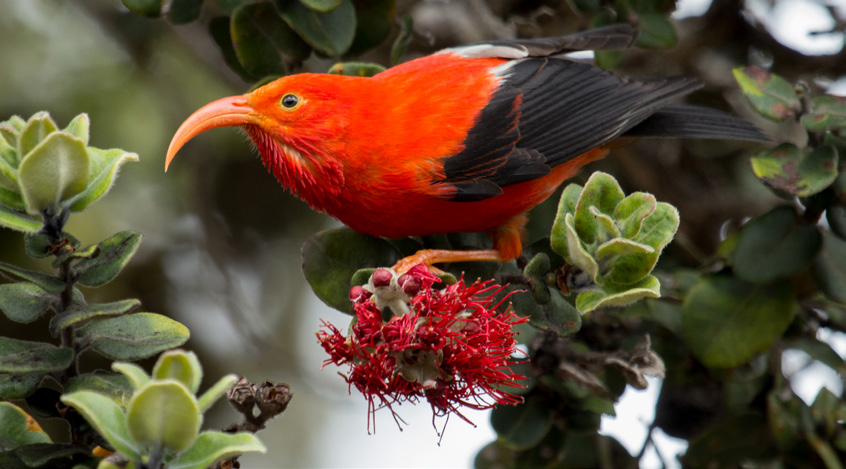Imagine yourself nestled in the lush rainforests of Hawaii, surrounded by vibrant foliage and the soothing sounds of nature. As you embark on your birdwatching adventure, you are about to delve into a world of extraordinary avian wonders. Hawaii is home to a diverse range of rare and endemic bird species, each boasting its own unique features and captivating charm. From the dazzling colors of the O’o to the melodic calls of the ‘Apapane, this article will take you on a journey through the fascinating world of Hawaii’s feathered inhabitants. Get ready to be enchanted by the untamed beauty of these remarkable creatures.
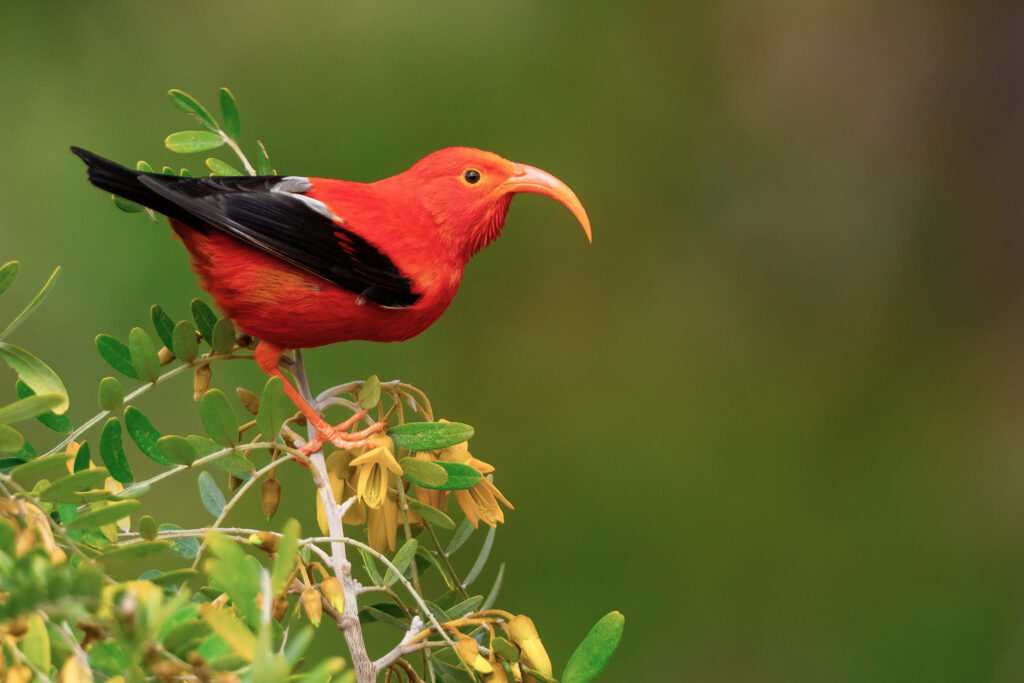
The Importance of Hawaii as a Birdwatching Destination
Hawaii is renowned as a premier birdwatching destination, attracting nature enthusiasts and bird lovers from all over the world. This paradise in the Pacific Ocean offers an array of diverse ecosystems, unique geographic isolation, and an abundance of rare and endemic bird species. Whether you are an avid birder or just starting out, Hawaii provides an unparalleled opportunity to immerse yourself in the wonders of avian life.
Diverse Ecosystems of Hawaii
The Hawaiian islands are a treasure trove of diverse ecosystems, each harboring its own distinct bird populations. From the lush rainforests of Kauai to the arid landscapes of Lanai, each island boasts unique habitats that support a wide range of bird species. The native forests, wetlands, mountains, coastlines, and volcanoes create a varied tapestry of environments, providing a rich and vibrant home for countless avian species.
Unique Geographic Isolation
One of the factors that make Hawaii truly special for birdwatching is its geographic isolation. Situated over 2,000 miles away from any major landmass, the islands have been geographically separated from the rest of the world for millions of years. This isolation has resulted in the evolution of distinct bird species found nowhere else on Earth. Hawaii’s isolation offers bird enthusiasts a chance to witness the wonders of evolution in action and observe the unique adaptations that have developed over time.
Abundance of Rare and Endemic Bird Species
Hawaii is a haven for rare and endemic bird species, making it an incredibly exciting destination for birdwatchers. As the archipelago with the highest number of endemic bird species in the world, Hawaii offers an opportunity to witness these unique creatures up close and personal. From the vibrant Iiwi with its striking scarlet plumage to the elusive Akekee and its distinct yellow feathers, each endemic bird species found in Hawaii is a testament to the islands’ biodiversity and their importance as a globally significant birdwatching destination.
The Diversity of Hawaii’s Bird Species
Hawaii’s bird species encompass a wide range of diversity, including both rare and endemic birds as well as migratory species and introductions. Understanding the various categories of bird species in Hawaii will allow birdwatchers to appreciate the abundant avian life found in the islands.
Rare and Endemic Species
Hawaii is home to numerous rare and endemic bird species that have evolved in isolation over millions of years. These birds are found only in Hawaii and are considered biologically significant. One such species is the Palila, a critically endangered finch that relies on the native mamane tree for its survival. Other notable endemic birds include the Nene, a goose species often seen grazing in lava fields, and the Puaiohi, a small thrush found only on the island of Kauai.
Migratory Birds in Hawaii
Migratory birds also call Hawaii home at different times of the year, adding to the diversity of bird species in the islands. These birds, such as the Pacific Golden-Plover and the Arctic Tern, undertake epic journeys across the Pacific Ocean to spend their winters in the warmth of Hawaii. Witnessing the arrival and departure of these migratory birds is a spectacle not to be missed, and birdwatchers can experience the thrill of observing the interplay between local and visiting species.
Introductions and Established Species
Alongside the rare and endemic species, Hawaii is also host to introduced bird species that have established stable populations. These introduced species, including the Japanese White-eye and the Red-crested Cardinal, have adapted well to the islands’ ecological niches and can be observed throughout the archipelago. While not native to Hawaii, these birds have become an integral part of the avian community and add to the overall diversity of the birdwatching experience.
Endangered and Threatened Bird Species of Hawaii
Unfortunately, Hawaii’s avian paradise is not without its challenges. A number of bird species in the islands are currently endangered or threatened, facing significant risks to their survival. Understanding these species and the threats they face is crucial in promoting their conservation and protecting their habitats.
Hawaiian Crow (Alala)
The Hawaiian Crow, commonly known as the Alala, is one of the most endangered bird species in the world. Once found throughout the Hawaiian islands, its population has drastically declined due to habitat loss, disease, and predation. Conservation efforts, including captive breeding and reintroduction programs, are underway to save this iconic species from extinction.
Palila
The Palila, a specialized finch species, is critically endangered due to the loss and degradation of its preferred mamane tree habitat. It relies heavily on the nutritious seeds of the mamane tree for its survival. Efforts to protect and restore mamane forests have been crucial in the battle to save the Palila from extinction.
Nene (Hawaiian Goose)
The Nene, Hawaii’s state bird, has made a remarkable recovery from the brink of extinction. Once reduced to only 30 individuals, conservation efforts including captive breeding and habitat restoration have helped the Nene population rebound. Nevertheless, the species still faces ongoing threats such as habitat loss and predation, requiring continued conservation efforts to secure its future.
Puaiohi (Small Kauai Thrush)
The Puaiohi, a small thrush endemic to Kauai, faces numerous threats including habitat loss, predation by invasive species, and diseases transmitted by mosquitoes. With fewer than 500 individuals remaining in the wild, conservation efforts are vital to protect this critically endangered bird from further decline.
Iiwi
The vibrant Iiwi, with its brilliant scarlet plumage and distinctive curved bill, is increasingly vulnerable to habitat loss, avian diseases, and the impact of climate change. This beautiful bird, once widespread throughout Hawaii, is now classified as vulnerable, highlighting the urgent need for conservation action to safeguard its future.
Akikiki (Kauai Creeper)
The Akikiki, or Kauai Creeper, is a small Hawaiian honeycreeper currently found only on the island of Kauai. Its population has plummeted due to habitat loss caused by deforestation and the spread of non-native plant species. Effective habitat restoration and predator control are crucial in ensuring the survival of this critically endangered bird.
Akekee
The bright yellow plumage of the Akekee makes it a highly sought-after bird species for birdwatchers. Endemic to the island of Kauai, the Akekee faces threats from habitat loss, invasive predators, and avian diseases. Conservation measures aim to protect the remaining Akekee population and restore their native forest habitats.
Oahu Elepaio
The Oahu Elepaio, a forest-dwelling flycatcher species, is endemic to the island of Oahu. Historically, it faced habitat loss and predation by invasive species, resulting in a significant decline. However, intensive conservation efforts have led to a population increase, showcasing the success of dedicated conservation work.
Oahu Alauahio
The Oahu Alauahio, a small passerine bird endemic to Oahu, has faced significant threats due to habitat destruction and the spread of invasive species. Conservation initiatives have focused on protecting its remaining habitats and controlling predators, ensuring the survival of this endangered species.
Oahu Creeper
The Oahu Creeper, a small forest bird endemic to Oahu, has experienced a dramatic population decline primarily due to habitat loss and the spread of non-native plants. Conservation efforts involving habitat restoration and predator control have been instrumental in increasing the Creeper’s chances of survival.
Popular Birdwatching Locations in Hawaii
Hawaii offers numerous captivating birdwatching locations that showcase the islands’ natural beauty and diverse avian populations. Whether you prefer exploring national parks, wildlife refuges, or state parks, Hawaii offers a range of spectacular birding spots to experience firsthand.
Haleakala National Park
Located on the island of Maui, Haleakala National Park is renowned for its stunning landscapes and unique bird species. The park’s high elevation and diverse habitats make it an ideal sanctuary for a variety of endangered and endemic birds including the mesmerizing Maui Parrotbill, the graceful Nene, and the colorful Apapane.
Hakalau Forest National Wildlife Refuge
Situated on the Big Island, the Hakalau Forest National Wildlife Refuge is a biodiverse wonderland brimming with native bird species. This refuge is crucial for the conservation of endangered and endemic bird species like the Akiapolaau, Akepa, and Hawaii Creeper. Birdwatchers can explore the refuge’s lush forests and witness the captivating behaviors of these unique avian treasures.
Kilauea Point National Wildlife Refuge
Located on the picturesque island of Kauai, the Kilauea Point National Wildlife Refuge provides breathtaking views of the Pacific Ocean and a chance to observe seabirds in their natural habitat. The refuge is home to the endangered Laysan Albatross, the striking Red-footed Booby, and the iconic Hawaiian Monk Seal, offering a remarkable birdwatching experience.
Hanalei National Wildlife Refuge
Nestled in the heart of Kauai’s North Shore, the Hanalei National Wildlife Refuge is an idyllic birdwatching destination. This refuge attracts a diverse array of waterfowl, including the endangered Hawaiian Duck (Koloa) and the vibrant Hawaiian Gallinule (Alae Ula). Visitors can wander along the refuge’s tranquil wetlands and appreciate the beauty of these spectacular bird species.
Waimea Canyon State Park
Known as the “Grand Canyon of the Pacific,” Waimea Canyon State Park on Kauai offers stunning vistas and a chance to spot raptors soaring above the rugged cliffs. The park is home to the endangered Hawaiian Hawk (I’o), also known as the ‘aumakua or family god. Observing the majestic flight of these birds against the backdrop of the canyon’s vibrant colors is truly awe-inspiring.
Oahu’s North Shore
Oahu’s North Shore not only offers legendary surfing waves but also presents fantastic opportunities for birdwatching. The lush forests and wetlands of the North Shore are home to a variety of avian species, including the endangered Oahu Elepaio and Oahu Amakihi. Adventurous birdwatchers can venture through the area’s scenic trails, keeping an eye out for these endemic bird treasures.
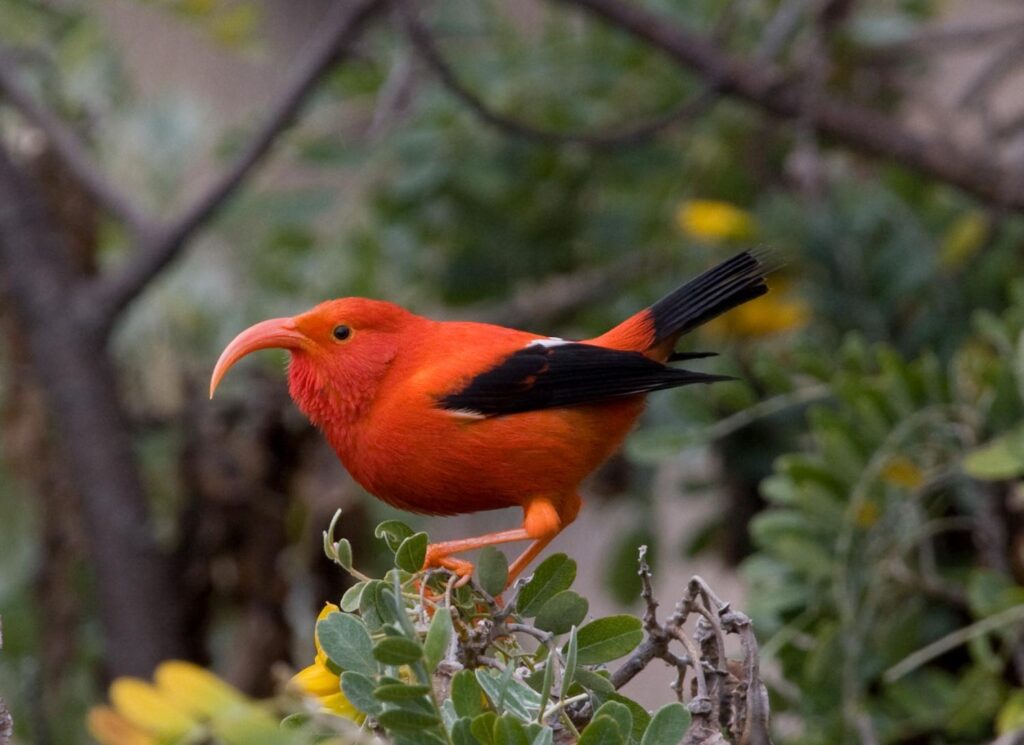
Conservation Efforts for Hawaiian Birds
Conservation efforts play a vital role in protecting Hawaii’s unique bird species and their fragile ecosystems. Through the combined efforts of conservation organizations, government agencies, and local communities, significant progress is being made to ensure the survival of Hawaii’s avian treasures.
Avian Conservation Centers in Hawaii
Several avian conservation centers in Hawaii are committed to the rescue, rehabilitation, and release of endangered and injured birds. These centers provide vital care and treatment to birds affected by habitat loss, disease, or human impact. By supporting these centers through donations or volunteer work, individuals can directly contribute to the conservation efforts and help safeguard Hawaii’s avian wildlife.
Habitat Restoration Projects
Habitat restoration is crucial to the success of bird conservation in Hawaii. Efforts are underway to restore and protect native forests, wetlands, and other vital ecosystems that sustain bird populations. Activities such as reforestation, removal of invasive species, and habitat enhancement ensure that Hawaiian birds have suitable habitats to thrive.
Pollinator Conservation and Reforestation
Pollinators, such as native honeycreepers and nectar-feeding birds, play a crucial role in Hawaii’s ecosystem. Conservation efforts aimed at promoting the health and abundance of pollinators ensure the survival of numerous bird species that rely on nectar as a food source. Reforestation projects that focus on planting native flowering plants not only provide essential resources for birds but also help restore and protect their habitats.
Captive Breeding Programs
Captive breeding programs have been instrumental in saving some of Hawaii’s most critically endangered bird species from extinction. By breeding and raising birds in controlled settings, these programs aim to increase population numbers and genetic diversity. Once the birds have reached suitable numbers, they can be reintroduced into protected habitats to help reestablish viable populations.
Unique Adaptations of Hawaii’s Birds
Hawaii’s birds have evolved a remarkable array of adaptations that have allowed them to thrive in their distinct island environments. From specialized bill shapes and sizes to intricate vocalizations and courtship displays, these adaptations showcase the fascinating diversity of avian life in Hawaii.
Evolution on Isolated Islands
Hawaii’s isolation from other landmasses has led to the extraordinary evolution of unique bird species. Over millions of years, birds have adapted to their surroundings, resulting in remarkable variations in characteristics and behaviors. These adaptations demonstrate the incredible power of natural selection and the role that isolation plays in shaping the avian life found in Hawaii.
Specialized Bill Shapes and Sizes
The bill shapes and sizes of Hawaiian birds have evolved to suit their specific feeding habits. From the long, curved bills of nectar-feeding honeycreepers like the Iiwi to the robust, seed-cracking beaks of finches like the Palila, these adaptations allow birds to exploit the available food sources in their respective habitats. The diversity of bill adaptations in Hawaii’s bird species is a fascinating testament to the evolutionary pressures that have shaped their unique characteristics.
Vocalizations and Courtship Displays
Birds use vocalizations and intricate courtship displays to communicate and attract mates. Hawaii’s birds are no exception, with species like the Oahu Creeper and the Iiwi showcasing extraordinary vocal abilities and elaborate courtship rituals. Witnessing these captivating displays not only provides a glimpse into the complex social dynamics of birdlife but also offers an opportunity to appreciate the beauty and diversity of Hawaii’s avian treasures.
Niche Partitioning
Hawaii’s limited resources have resulted in niche partitioning among bird species, enabling coexistence and minimizing competition for food and habitat. Various bird species have evolved to occupy different ecological niches, each specializing in a particular food source or microhabitat. This phenomenon is particularly evident among the honeycreepers, with each species displaying unique adaptations to exploit specific niches within the forests of Hawaii.
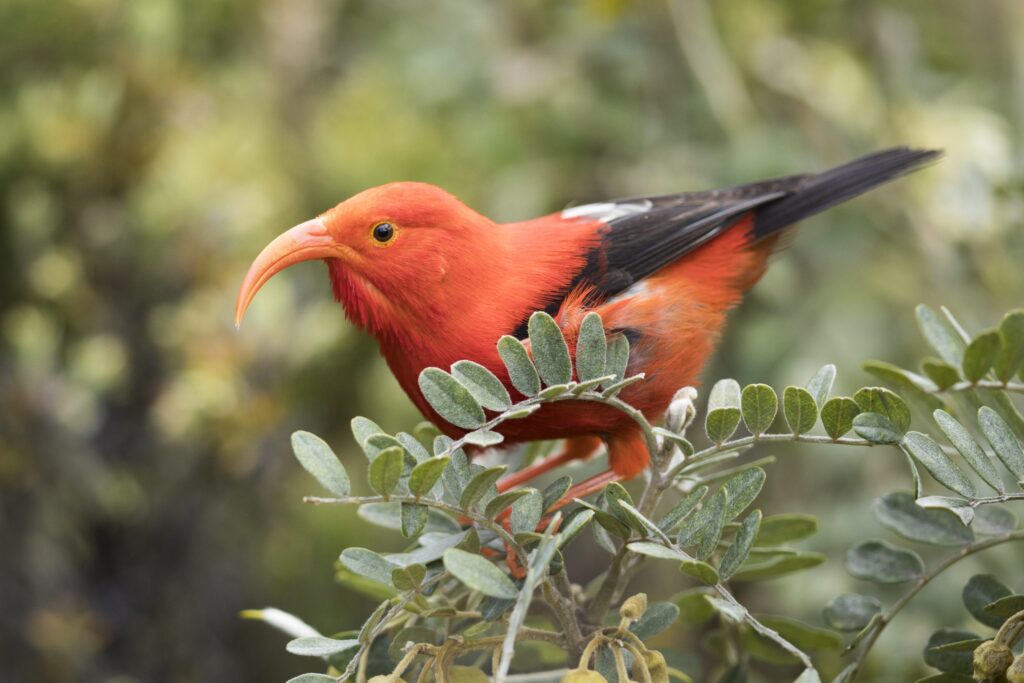
Challenges and Threats to Hawaii’s Bird Species
Hawaii’s bird species face numerous challenges and threats that jeopardize their existence. Understanding these factors is crucial in implementing effective conservation strategies and ensuring the survival of these remarkable avian creatures.
Habitat Loss and Degradation
Habitat loss and degradation pose significant threats to Hawaii’s bird species. As urbanization, agriculture, and invasive species continue to encroach upon native forests and wetlands, critical habitats are being destroyed or altered, leading to a loss of nesting sites, food sources, and essential resources. Protecting and restoring these habitats is of utmost importance in preserving the unique biodiversity of Hawaii’s avian population.
Invasive Species
Invasive species, such as feral cats, rats, and introduced birds, have wreaked havoc on Hawaii’s native bird populations. These predators compete for resources, prey on eggs and nestlings, and transmit diseases to vulnerable species. Controlling and eradicating invasive species remains a top priority to safeguard Hawaii’s bird species and their habitats.
Climate Change
Climate change poses a significant threat to Hawaii’s birds, impacting their habitats and altering critical ecological relationships. Rising temperatures, changes in rainfall patterns, and increased frequency and intensity of extreme weather events can disrupt nesting, feeding, and migration patterns. Adapting conservation strategies to mitigate the effects of climate change is vital for ensuring the long-term survival of Hawaii’s avian treasures.
Disease and Avian Malaria
Diseases, especially avian malaria carried by mosquitoes, have had devastating effects on Hawaii’s bird populations. Native bird species often lack sufficient immunity to these diseases, making them extremely vulnerable to infections. With the growing spread of mosquitoes due to climate change and urbanization, the threat of avian malaria continues to escalate, necessitating proactive measures to control mosquito populations and prevent disease transmission.
Collision with Man-Made Structures
Birds in Hawaii face the risk of collisions with man-made structures, such as power lines, communication towers, and buildings. These collisions can result in injuries or death, posing a significant threat to already vulnerable bird populations. Implementing measures such as bird-friendly infrastructure, monitoring flight patterns near high-risk areas, and public education can help mitigate the impact of these collisions and protect Hawaii’s bird species.
Successful Bird Conservation Stories in Hawaii
Despite the numerous challenges facing Hawaii’s bird species, several success stories demonstrate the positive outcomes of conservation efforts.
Recovery of the Nene
The Nene, once on the brink of extinction, has made a remarkable recovery thanks to decades of dedicated conservation work. Through captive breeding programs, habitat restoration, and public education initiatives, the Nene population has rebounded, providing valuable lessons for the conservation of other endangered bird species in Hawaii.
Restoration of Hakalau Forest
The restoration of Hakalau Forest on the Big Island stands as a testament to successful conservation efforts. By removing invasive species, reforesting native plants, and implementing control measures for predators, the forest has seen an increase in native bird populations. Birdwatchers can now witness the return of endangered species such as the Akepa and Akiapolaau to their natural habitat.
Conservation of the Akepa
The Akepa, a critically endangered Hawaiian honeycreeper, has benefited from intensive conservation actions. Through habitat restoration, predator control, and community involvement, the Akepa population has shown signs of recovery. These efforts serve as a shining example of how targeted conservation actions can make a substantial difference in the survival of highly threatened species.
Success of the Hawaii Forest Bird Survey
The Hawaii Forest Bird Survey is an ongoing monitoring program that plays a crucial role in tracking bird populations and informing conservation efforts. By systematically surveying bird communities across various habitats, researchers gain critical insights into population trends, distribution, and habitat suitability. The data collected from this survey has been instrumental in identifying priority areas for conservation and guiding targeted management actions.
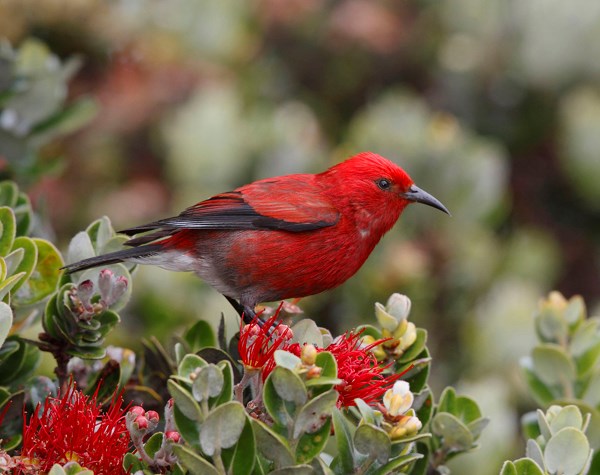
Birdwatching Tips and Etiquette in Hawaii
To ensure a positive and respectful birdwatching experience in Hawaii, it is essential to follow certain guidelines and practices. By respecting the wildlife and the environment, birdwatchers can contribute to the conservation efforts and help preserve the beauty of Hawaii’s avian treasures.
Choosing the Right Time and Season
Bird activity in Hawaii can vary throughout the year, so choosing the right time and season is key to maximizing your birdwatching experience. Familiarize yourself with the migratory patterns of specific bird species and their preferred habitats. Consider visiting during breeding seasons to witness courtship displays and nesting behaviors. Additionally, early mornings and late afternoons tend to be the most active times for bird activity.
Researching Bird Species and Habitats
Prior to your birdwatching adventure, conduct thorough research on the different bird species you hope to see and the habitats they frequent. This knowledge will guide your choice of locations and optimize your chances of spotting specific birds. Familiarize yourself with field guides, online resources, and local birding communities to gather valuable insights and expert advice on the best spots and strategies for observing Hawaii’s avian wildlife.
Respecting Wildlife and the Environment
When birdwatching in Hawaii, it is essential to respect the wildlife and their habitats. Maintain a safe distance from birds to avoid causing stress or disturbance. Avoid using playback or recordings of bird calls, as this can disrupt natural behaviors and potentially attract unwanted attention from predators. Additionally, tread lightly and leave no trace, being mindful of the fragile ecosystems and minimizing any impact on the environment.
Hiring Local Guides and Experts
Consider engaging the services of local guides and experts who possess in-depth knowledge of the area, bird species, and conservation efforts. Local guides can provide invaluable insights, offer expert identification tips, and ensure that your birdwatching experience is conducted ethically and within the bounds of wildlife protection regulations. Supporting local guides also contributes to the preservation of Hawaii’s avian treasures and the sustainable growth of bird tourism.
Conclusion
Birdwatching in Hawaii is an unparalleled experience that offers a glimpse into the awe-inspiring world of rare and endemic bird species. With diverse ecosystems, unique geographic isolation, and an abundance of avian treasures, Hawaii stands as a globally significant birdwatching destination. However, the fragile ecosystems and threatened bird species face numerous challenges. It is crucial that we appreciate Hawaii’s avian treasures, promote ongoing conservation efforts, and continue the legacy of birdwatching by practicing ethical birdwatching techniques and supporting local conservation initiatives. By working together, we can ensure the preservation of Hawaii’s avian biodiversity for future generations to marvel at and cherish.
